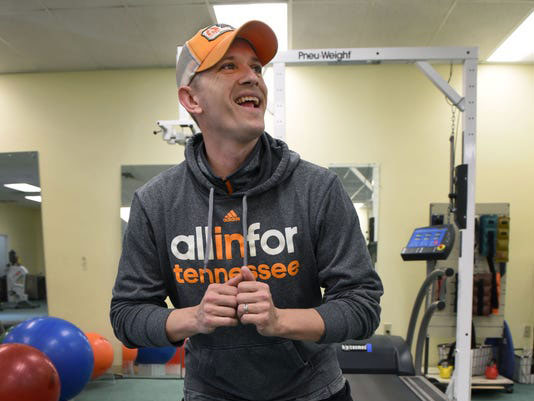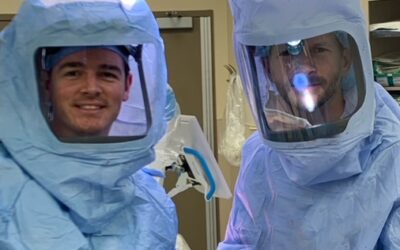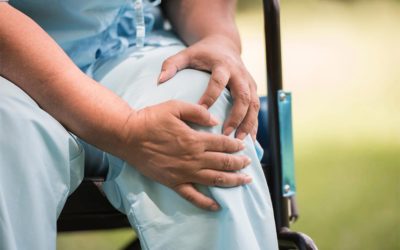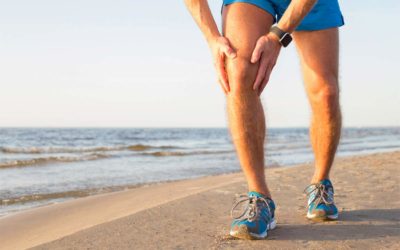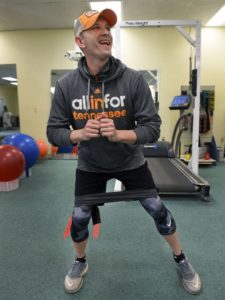 Matt Thompson knew immediately that loud “pop” he heard was serious.
Matt Thompson knew immediately that loud “pop” he heard was serious.
On a wet Dec. 26, 2016, Thompson — a lineman for a cable company — was coming down off a pole when his foot slipped on a 6-inch curb.
“At first, I thought I broke my leg,” Thompson said.
Instead, it was more injury to a knee that had given him trouble for nearly 20 years, following a torn ACL after playing high school, college and rec sports.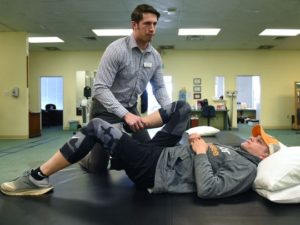 Until a few years ago, that would have meant the Seymour resident, 40, would wait about a decade to get a knee replacement, suffering pain and disability in the interim.
Until a few years ago, that would have meant the Seymour resident, 40, would wait about a decade to get a knee replacement, suffering pain and disability in the interim.
“That was the road I was going down,” Thompson said.
Instead, orthopedic surgeon Dr. Mike Casey of Tennessee Orthopaedic Alliance offered an alternative: He could remove some cartilage from Thompson’s knee, send it to a Boston lab to be cultured for a few weeks, then re-implant it and hope it took root and healed the injury.
“I’d never heard of anything like that before,” Thompson said — but he was game.
In fact, such cartilage cultures and implants have been around since the 1980s but didn’t catch on in the United States until the late 1990s, Casey said. He’s been doing them in Knoxville since 2006, after he read about the technique, researched it and went through training, which included observing doctors in other states using it and visiting Vericel Corp.’s Boston-based lab to see the cells cultured.
“I was just having so many patients who had wearing on the joint or an abnormality on the joint surface, and there weren’t really any good options,” particularly for the younger and very active ones, Casey said.
Doctors had grafted cadaver cells onto cartilage with some success, but Casey began using Vericel’s first-generation Carticel implant and now is one of four physicians in the state — with Franklin Drs. Scott Arthur of the Bone and Joint Clinic and Dr. Colin Looney of Vanderbilt Bone and Joint, and Dr. David Moore of Elite Sports Medicine and Orthopaedic Center in Nashville — to use Vericel’s third-generation Matrix-Induced Autologous Chondrocyte Implantation, or MACI, implant, approved by the FDA in December 2016.
That’s the procedure Casey performed on Thompson, arthroscopically harvesting small pieces of cartilage from the bone behind the kneecap and sending them to Vericel. The company isolated cells — chondrocytes — from the cartilage, grew them in the lab, then put millions of them in dense layers on a patch made of purified fibers of pig collagen, the protein that makes up skin and connective tissues.
In a surgery that typically takes a little more than an hour, Casey placed the patch over the damaged part of Thompson’s cartilage, where — if all goes as planned — the membrane patch will be reabsorbed as the cells fill in and repair the defect in his knee.
It’s an outpatient surgery, and patients are usually up on the knee the same day, Casey said. They spend about six weeks on crutches and take part in a precise — sometimes tedious — 13-week physical therapy program outlined in a detailed manual.
Thompson is in the middle of that healing process, getting physical therapy “by the book” at Benchmark Physical Therapy in South Knoxville.
”It tells us exactly how much to bend his leg, what activities he can do” from week to week, said Benchmark physical therapist Chase Best.
While “I feel like could probably go out there and run a mile right now,” said the active Thompson, who’s anxious to get back to his lineman job and coach his son’s baseball team, “the book says I can’t. As much as I’ve been through (with my knees), I’ll back off. … I do exactly what the book says every day.”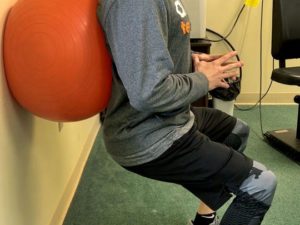 Casey said the surgery is ideal for someone Thompson’s age, with his active lifestyle. Five-time Olympic champion swimmer Dara Torres, 41, also has had both the Cardicel and MACI implants.
Casey said the surgery is ideal for someone Thompson’s age, with his active lifestyle. Five-time Olympic champion swimmer Dara Torres, 41, also has had both the Cardicel and MACI implants.
It’s not for everyone, though; the FDA right now recommends early 50s as an age cut-off, and it’s not appropriate for patients with generalized arthritis, Casey said. He now does seven to 10 of the procedures a year.
Though early government reviews comparing MACI to other methods of repairing the knee were unable to consistently find superior clinical outcomes, a two-year phase III study completed in 2012 did find a statistically significant difference in pain and function in MACI patients compared to those who got different procedures. That study paved the way for FDA approval, and acceptance of the procedure by most commercial insurers.
Casey said in the dozen years he’s been re-implanting cultured cells, only one of his patients so far needed a knee replacement later.
“If we get a good cartilage growth into that defect (in the knee), that solves the problem,” Casey said. “That’s our whole goal … to save or restore the joint, as opposed to replacing it.”
Recently, he saw a patient in her 30s, on whom he’d performed the procedure two years ago, had run a marathon.
“It makes you smile a little bit more,” he said.
And Thompson, who said the year he spent unable to work or participate in much physical activity left him somewhat dispirited, said he feels more like himself every day.
“Ever since the surgery, I’m so happy that we were able to do this,” he said. “It’s worked great for me.”

